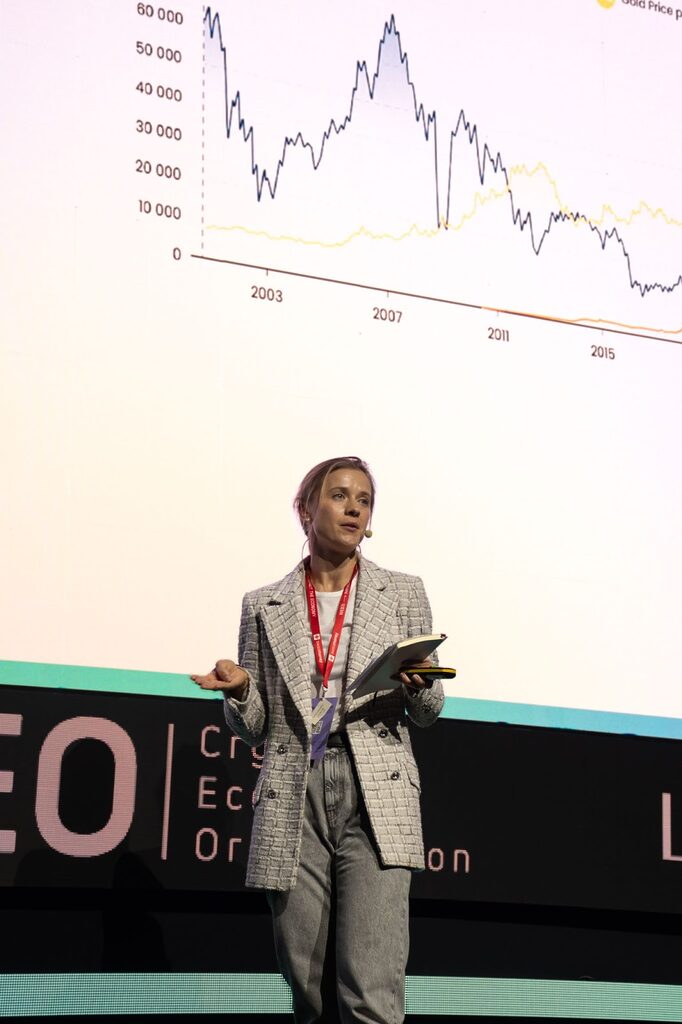
The third day of Christmas traditionally sees us laden with three rowdy and rambunctious French Hens. In a twist of good fortune, Cryptomas is striving to give us a much tidier affair in the City of Lights, where the European Union’s “broody birds” are finally setting their sights on clear crypto regulation.
A lot has changed in 2023. The passage of MiCA means that the European Union has taken a significant step towards providing much-needed clarity to crypto firms while also introducing measures to protect consumer interests and their precious nest eggs.
Despite these huge strides, regulators and industry participants contend that more work should be done as discussions around a second crypto regulatory package, dubbed MiCA 2.0, are already gaining momentum.
Sponsored
DailyCoin has compiled a regulatory wish list from external sources and relevant interviews conducted in recent months in the spirit of Christmas cheer.
Our letter to Santa (the EU Parliament) outlines what crypto industry participants want to see in a MiCA 2.0.
Without further ado, let’s dive in!
1. Greater Collaboration
The travel rule, which requires exchanges to report transactions greater than €1,000 in the first batch of MiCA regulations set to come into force in 2024, raised questions about efficiency and effectiveness.
Sponsored
Many in the industry had bashed the rule, arguing that it imposed unnecessary burdens and costs on crypto exchanges who would have to spend significant resources on collecting data. At the same time, they argued that it was ineffective in combating money laundering as bad actors were likely to find a workaround.
Speaking with DailyCoin, CEO of Swiss Financial services company iSun AG, Ieva Trinkūnaitė tipped greater collaboration between regulators and industry participants as a potential solution to issues raised by the travel rule ahead of MiCA 2. The iSun chief argued that this approach would lead to more effective and efficient solutions instead of yielding to the temptation to tick off general regulatory boxes.

“Collaboration with businesses would bring a lot of that practical knowledge. I think this should be the main focus, and the government shouldn’t disregard it,” Trinkūnaitė emphasized.
Aside from improved insight into the industry’s inner workings, greater collaboration ahead of MiCA 2 should foster trust and transparency between regulators and industry participants. It also increases the chances that the resulting regulatory framework will achieve the right balance between consumer protection and innovation.
There are several ways through which this collaboration can be achieved. Still, advocates typically agree that an advisory committee of industry participants would be appreciated, along with regulatory sandboxes and workshops moderated by the governing bodies.
2. A Solution to Article 68
One MiCA provision has faced significant pushback from industry participants regarding issues requiring greater collaboration, like the travel rule: article 68. While the travel rule has been described as burdensome, article 68 is a deal breaker for many.
Within the provision, EU policymakers state that crypto trading platforms should not support trading for assets with built-in anonymizing features unless the holders of these tokens and their transaction history can be identified.
In its current language, several industry participants believe the article is too restrictive, posing a threat to privacy and innovation.
“Privacy is a cornerstone of human rights, enabling individuals to communicate freely and securely without fear of surveillance or retaliation. Privacy is essential for financial transactions to safeguard sensitive information from hackers, competitors, and malicious actors. MiCA Article 68 restrictions, however, could jeopardize stakeholders’ privacy and security,” former Electric Coin Head of Global Regulations Gary Weinstein wrote in April 2023.
At the time, Weinstein asked that the EU address these concerns in a second text. The former Electric Coin regulatory chief called for a more flexible approach that considered multiple compliance options, in one instance suggesting that crypto asset service providers be allowed to develop in-house compliance solutions that allowed them to continue facilitating trades in privacy coins.
In compliance with article 68, in June 2023, Binance announced plans to cease support for 12 privacy tokens in several European markets, only to reverse the decision after significant flak from privacy advocates within the industry.
3. Compliance Rules Taking into Consideration the Peculiarities of DeFi
DeFi eliminates the need for centralized intermediaries to offer financial services, providing fewer obstacles to those looking to access financial services like loans. Aside from this lack of intermediaries,
DeFi also provides greater privacy for its users than traditional banking models.
For regulators, however, DeFi’s privacy focus challenges anti-money laundering (AML) and anti-terrorism financing regulation. So how can regulators ensure compliance in DeFi without totally eroding its value to some of its most devout users?
In conversation with DailyCoin, the CEO of on-chain compliance-focused firm micapass, Gintarė Košubienė, suggested that compliance be shifted to the customers and not to the decentralized protocols.
“The entities making the transaction should be compliant, not the businesses. It should not be B2B compliance, but it should go to the B2C level, which means that now we can empower digital identities with “proof of AMLs,” she noted.

Košubienė believes that solutions allow users to examine their wallet AML risk. She argued that protocols can automatically approve or veto transactions based on AML risk zero-knowledge proofs provided by users. According to Košubienė, implementations like this are already taking root in jurisdictions like Vietnam and Indonesia.
“We are seeing a trend of people from Vietnam and people from Indonesia checking their risk level because the regulation on their side is shifting, and crypto is becoming a more acceptable means of payment," she disclosed.
In sum, dear Santa (EU Parliament), crypto industry participants, and community members want greater input in the creation of the rules that will shape their industry with the hopes that these rules would better reflect the interests of users of the technology and the practical realities faced by service providers.
I hope you enjoyed the third day of Cryptomas! Remember to call on the fourth day as we plan to look back at what happened in 2023 and take you through four of the most positive events.
Check out the previous edition of our 12 Days of Cryptomas series as we identified crypto’s most iconic duos:
Crypto’s Top 4 Pairings: Name More Iconic Duos, We’ll Wait
Read day 4 of our 12 Days of Cryptomas series here:
Looking Back at Crypto’s 2023 Mistletoe Moments
Learn more about MiCA with these stories:
EU’s MiCA Crypto Regulations: What You Need To Know
How MiCA Simplifies Crypto Advertising Compliance

